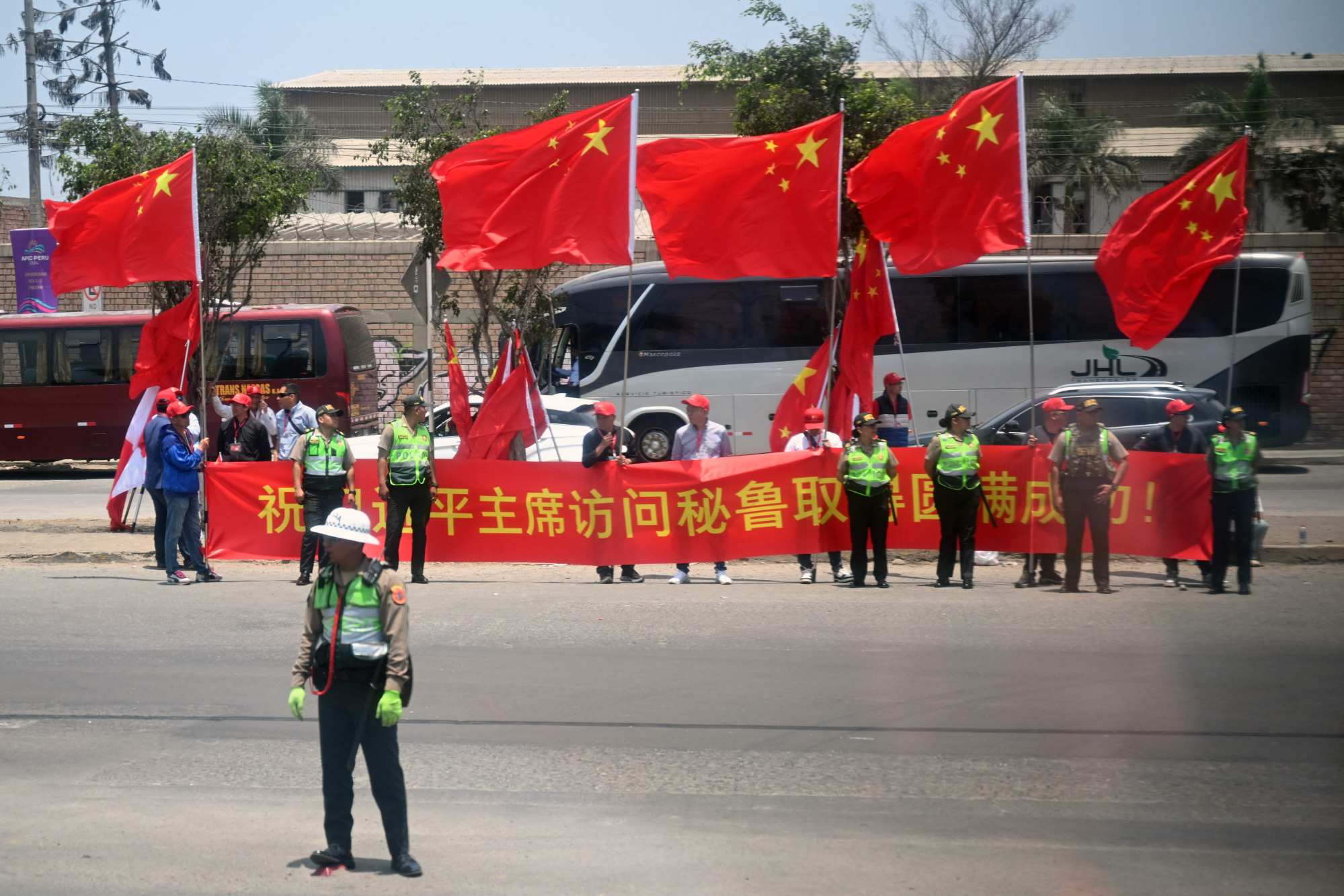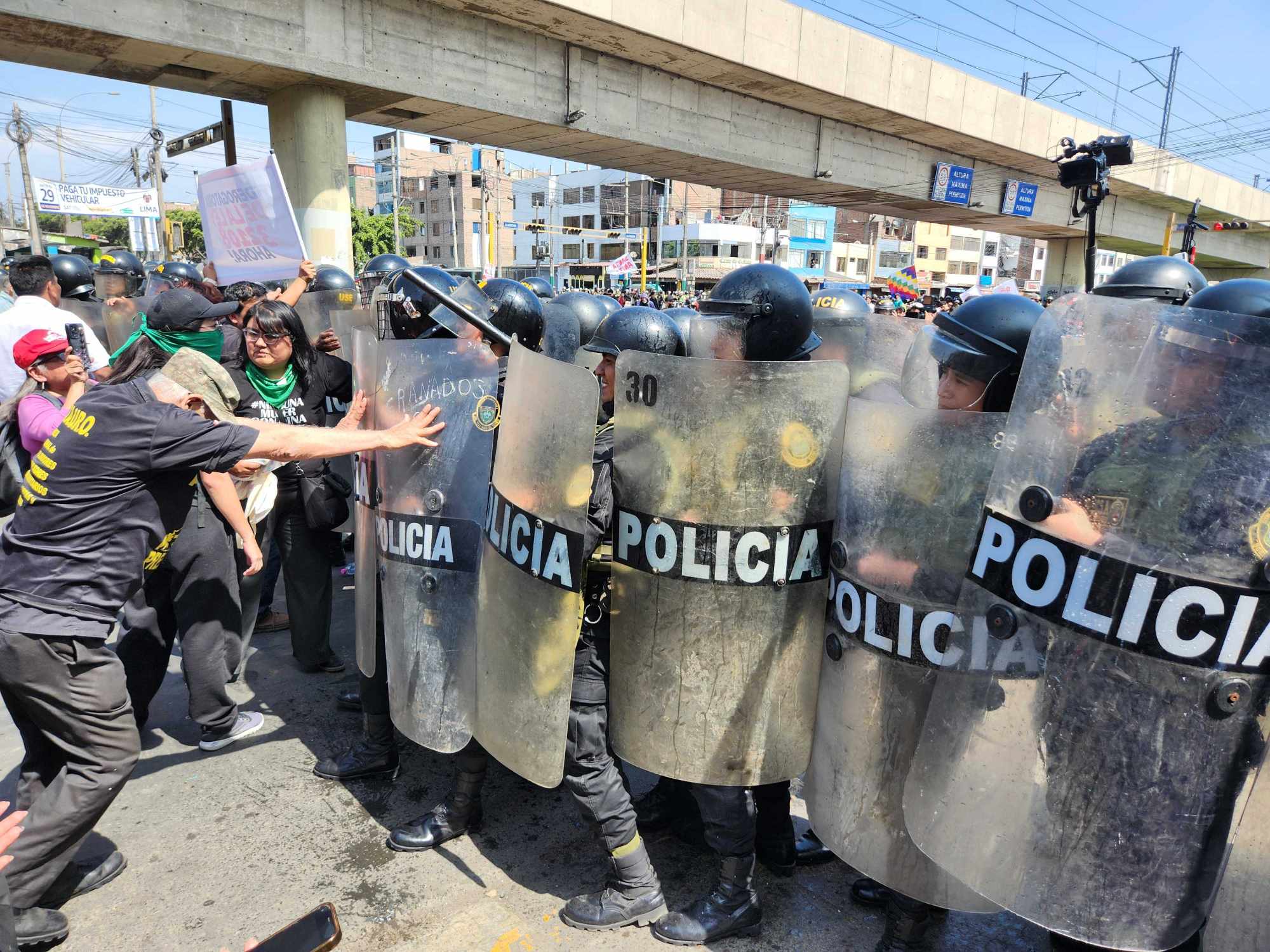Chinese President Xi Jinping arrived in Peru on Thursday morning accompanied by some 400 businesspeople and entrepreneurs to attend the Asia-Pacific Economic Cooperation summit that lasts through Saturday.
A focal point of the visit is Thursday’s virtual inauguration of Peru’s new US$3.5 billion Chancay port funded and operated by China. Beijing and Lima also plan to sign some 30 bilateral agreements during Xi’s visit, including an updated free-trade agreement.
“We must build on our traditional friendship to expand and deepen mutually beneficial cooperation across the board, and make it more responsive to the requirements of the new era,” Xi said in an article under his name in Peruvian media outlet El Peruano, timed to coincide with his arrival.
Do you have questions about the biggest topics and trends from around the world? Get the answers with SCMP Knowledge, our new platform of curated content with explainers, FAQs, analyses and infographics brought to you by our award-winning team.
“The world is undergoing faster transformation unseen in a century. Humanity has again come to a crossroads in history.”

From Lima, Xi is scheduled to travel to Brazil for an annual meeting of the G20 and attend a state visit with Brazilian President Luiz Inacio Lula da Silva on November 20.
Lame-duck US President Joe Biden also arrived on Thursday. The leaders of the world’s two largest economies are slated to talk on Saturday, the second and final day of the summit. It is likely to be Biden’s last time as president to meet Xi.
Biden and Xi will “take stock of efforts to responsibly manage competition”, a senior US official said ahead of their meeting. Their countries together account for some 43 per cent of global GDP.
It will mark Biden and Xi’s first known interaction since an April phone call and their first in-person meeting since they conferred on the sidelines of last year’s Apec meeting in California.
The pair are expected to discuss issues that have normally come up in Sino-American talks in recent years: Taiwan, alleged human-rights violations and Beijing’s support for Russia’s invasion of Ukraine, all as Biden prepares to leave office in two months.
Apec and the various bilateral meetings on its sidelines will be overshadowed by policy questions tied to the US election this month of former president Donald Trump, who has already named several China hawks to top posts in his coming administration.
The president-elect campaigned on an “America-first” agenda of anti-immigration and protectionist tariffs, including a threatened 60 per cent tax on all Chinese imports.
Beijing will try over the course of this week and next to position itself as a “responsible global citizen” as the US turns increasingly inward.
China is the second-largest trading partner for South America after the US. It is also the largest trading partner for many countries on a bilateral basis and has free-trade agreements with five countries.
Beijing has another 22 projects under way in South America through its Belt and Road Initiative, the mainland government’s scheme to improve trade and economic integration around the world.
Xi in Thursday’s article added that China was ready to work with Peru to “practise true multilateralism, promoting an egalitarian and orderly multipolar world and a universally beneficial and inclusive economic globalisation”.
Apec meets this year under the theme “Empower. Include. Grow.”. Created in 1989, when Asian economies were booming, the intergovernmental organisation aims to expand regional trade and reduce trade barriers.
But Apec’s own research suggests impediments are increasing in line with global trends and that its economic growth is likely to lag the rest of the world.
The group’s 21 member economies combined represent about 60 per cent of global GDP and more than 40 per cent of global commerce.
“It’s ironic that Trump will be talking about tariffs across the board while at Apec it’s been announced that Xi Jinping is going to sign a new updated free-trade agreement with the host country, Peru,” said Victor Cha of the Washington-based Centre for Strategic and International Studies.
“There’s no real point for a US-China bilateral meeting to advance any new agenda, other than to ensure some sort of stability in the interim before the transition [from the Biden administration],” Cha added.
Xi in his article sought to appeal to ordinary Peruvians with cultural references and by stressing the importance of grass-roots projects in a bid to counter China’s reputation in some quarters for striking deals with elites without engaging community groups.

“As an ancient Chinese saying goes, ‘Bringing benefit to the people is the fundamental principle of governance,’” Xi wrote. “We will encourage Chinese companies to create more jobs and fulfil their social responsibilities in Peru, making our paisano friendship more tangible and beneficial.”
But discontent with Peruvian President Dina Boluarte was apparent on Thursday as hundreds of protesters threw bottles, sticks and even avocados at a wall police bearing shields and truncheons seeking to prevent them from getting near the Apec venue.
The intermittent strikes since September are not so much directed at China or the global community as they are at the weak Peruvian government, analysts have said, citing corruption scandals, attempted coups and political instability.
Peru ranked ranked 121 out of 180 countries on Transparency International’s corruption index in 2023, its most recent report, down three points from 2022.
When Boluarte ascended to the presidency in late 2022 after her predecessor’s removal and arrest on charges of rebellion and conspiracy, she became the country’s sixth president in six years.
“It’s anti crime, it’s not even about income, because we’ve had a real increase in crime,” said Cynthia Sanborn, director of the China and Asia-Pacific Studies Centre at Universidad del Pacifico in Lima. “The government has not responded, not even with a show measure.”
A related source of anger, analysts said, was a perception that Peru’s government had focused on impressing global elites without concern for its many issues. “Apec, don’t be allied with the dictatorship,” read a sign at Thursday’s protest on Avenida Canada.
Security concerns were cited as a reason Xi did not travel to Chancay to inaugurate the port in person, instead taking part via video link from Peru’s presidential palace.
John Kavulich with Washington-based economic modelling firm Issue Insight said Beijing had concerns about investing US$3.5 billion in a port project in a country whose leadership has been shaky.
But unlike when Western banks and companies drive projects, mainland officials are able to take a longer view than just the next financial quarter, he said.
“Are they concerned that political instability or sustainability may not be what they hope for? Sure,” said Kavulich. “But they are able to look far down the path.”
More from South China Morning Post:
- For lame duck Joe Biden, an anticlimactic exit from the world stage
- China to court G20 nations to bypass US-led sanctions in potential Taiwan conflict: report
- Joe Biden, Xi Jinping will meet on Apec sidelines in Peru, US official says
- Will Xi’s final summit with Biden ease US-China anxiety before next Trump presidency?
- Asia-Pacific to see slowing economic growth amid trade tensions, policy uncertainty: Apec
For the latest news from the South China Morning Post download our mobile app. Copyright 2024.





